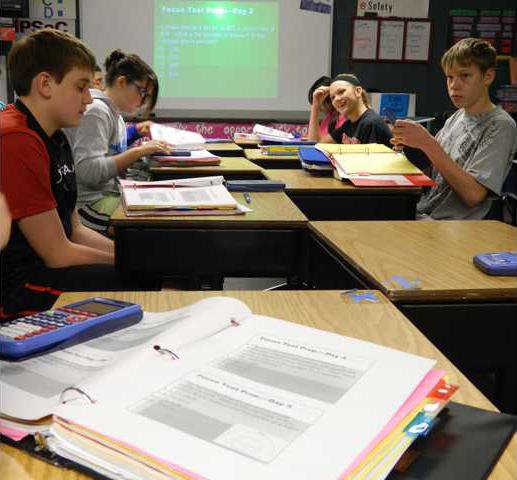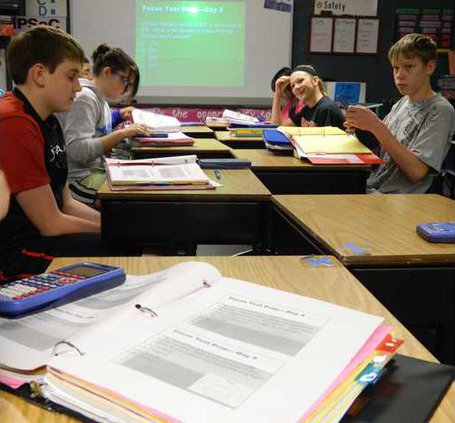Great Bend Middle School math teachers may feel like they won the lottery, but it is the students who will be the big winners.
Great Bend Middle School is one of five schools selected nationwide to be part of a five-year, $26 million project with Old Dominion University’s Center for Educational Partnerships. How much of that money will trickle into GBMS to help the roughly 500 students there each year is unknown at this time.
The project focuses on providing students in high-need middle schools with increased access to rigorous and engaging coursework in science, technology, engineering and mathematics. Based on the 2010-2011 Kansas State Assessment Test scores, all students at the school met adequate yearly progress as defined by the federal No Child Left Behind law.
USD 428 staff members will get their first look in how the math partnership will work when Dr. John Nunnery, project director, gives a workshop to GBMS math teachers and administrators at the District Education Center on March 7.
“Ruth Heinrichs (curriculum director) and the executive leadership of USD 428 worked hard to help us find a way to bring this opportunity to the children of Great Bend,” Nunnery said.
“Great Bend Middle School is excited about the opportunities for learning this grant will bring for the teachers and students in the area of math,” said David Reiser, GBMS principal.
“We are looking forward to the professional development it will provide for our math teachers and, ultimately, the increased achievement of all students in the area of math,” Reiser said. “In addition, the staff is looking forward to the challenge of incorporating technology and proven math strategies into their daily instruction to help students to learn key math concepts.”
“Our middle-school students have reached high levels of success in math in recent years,” Heinrichs said. “Participation in the math grant will provide the opportunity for students and teachers to reach even greater heights.”
Heinrichs added that she is excited about watching the progress during the next five years. She hopes the community will come to understand what a phenomenal opportunity this is for USD 428 and GBMS students.
““We are on the cutting edge of a program that has the potential to be used successfully throughout the United States,” Heinrichs said. This will allow the faculty to build on an already successful math curriculum.
“(The program) incorporates an innovative, high-quality, multi-tiered approach to professional development that employs school-based math coaching, an online platform and teacher-made videos of their own practices,” Nunnery explained.
“The use of technology will play a key role in providing professional development to mathematics teachers in rural and urban areas across the nation in a highly cost-effective way, linking them together in a professional learning community that will enhance sustainability,” he added.
Nunnery said that there will be significant improvements in math achievement among students by the third year of implementation, including closing achievement gaps for limited English proficient students and students with disabilities. The project is designed serve 135,000 students in 185 high-need middle schools across the U.S. over five years.
“Students taught using the math model will experience about 34 percent more annual growth in mathematics achievement,” he said.
The innovative math program provides a unique curricular framework that is customized to fit local and state standards and assessments. It is built around a research-proven cycle of effective instruction that engages students and extends their mathematical understanding, with four key elements: Active instruction, structured team practice using cooperative learning structures and team cooperation goals, ongoing assessment that allows teachers to frequently check for understanding and assess student progress and positive team and individual feedback which increases team interdependence and motivation.
Programs such as this are important because, although students in the U.S. have similar math achievement to international competitors in elementary school, during the middle school years, the math performance of U.S. students deteriorates dramatically.
Heinrichs said while all GBMS students met AYP, that was not the case at Great Bend High School. “We want to build a solid foundation” so when students move up they are ready. “Our ultimate goal is to help our graduates.”
DOING THE MATH
GBMS part of national math project focusing on high-need students





